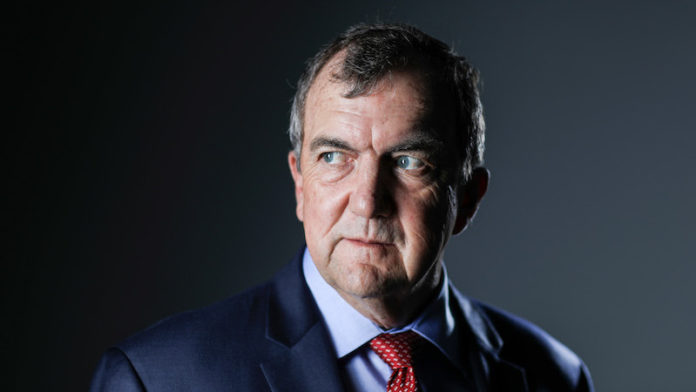
BARRICK Gold CEO, Mark Bristow, said the company would not yet commit to a long-term dividend policy and would most probably refrain from short-term merger and acquisition activity until there was “… better visibility on the gold price”.
“We haven’t got full visibility of the runway in front of us,” he said in an interview, adding that the gold price had “upside” but would probably correct before “finding its new level”. Bristow said, however, that gold industry consolidation remained a necessity.
Barrick Gold today unveiled a total distribution to shareholders of $750m consisting of a fourth quarter dividend equal to nine US cents per share and a $0.45c/share capital distribution. The special payout was derived from $1.5bn sales of non-core assets including divestment of shares in Australian mine Kalgoorlie in 2019 for $750m.
Barrick reported full year adjusted (for exceptional items) net earnings for 2020 of $1.15/share, a year-on-year increase of 125%. The earnings improvement was a result of higher realised gold and copper prices, the former averaging $1,778/oz (2019: $1,396/oz).
This was achieved on lower production of 4.76 million oz (5.47 million oz) as a result of having its 47.5%-owned Porgera gold mine in Papua New Guinea put into mothballs amid a dispute on royalties with the government.
Guidance of between 4.4 to 4.7 million oz excludes Porgera, although this production would be added back when the mine recommences output following an agreement with the government, said Barrick.
Said Bristow: “I’m not sure if this is the right time for M&A. There is a lot of opportunity but there’s also a lot of latent stress in the gold industry as valuations are high. We have really trimmed down the portfolio in a disciplined way, but now is the time to be prudent”.
The most accretive transaction for Barrick to conduct would be buying out its joint venture partners, such as AngloGold Ashanti which shares the Kibali mine in the Democratic Republic of Congo (DRC) mine with Barrick. Kibali, a jewel in the crown of Barrick and AngloGold respectively, produced 808,134 oz of gold in 2020.
Barrick and AngloGold have been trying to repatriate more than $500m in profits out of Kibali, an outcome that was said to be imminent in July last year. Bristow said today there was “no question as to whose cash it is”, and added that the increased hold over the government of the DRC imposed by President Felix Tshisekei, would assist in this regard.
“It’s very intriguing in terms of the transformation in the DRC,” he said. Tshisekedi had “managed a situation” where he had now gained “control of the parliament and senate” after first appearing to be a vassal of his predecessor, Joseph Kabila.
Tshisekedi recently appointed Sama Lukonde Kyenge as his prime minister. Lukonde had previously headed up the country’s state-owned Gecamines base metals mining company. His appointment has been construed as positive for the mining industry which has not yet given up on a renegotiation of the 2018 Mining Code imposed by Kabila.
“That is absolutely a live discussion,” said Bristow on the code. Earlier this week, Glencore CEO, Ivan Glasenberg, said his company had not given up hope of winning concessions in the code. Said Bristow: “Imagine if the Congo had attracted investors into the country back in 2017” instead of deterring them “… given the improvement in the copper price?”











